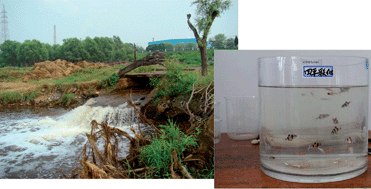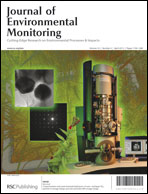Unknown chemicals, emerging contaminants, and the resulting reactions among them make early detection and warning of acute water toxicity extremely challenging. The conventional approach using small fish for toxicity monitoring normally requires a designated species of fish and over a week's time to complete, including dilution of the wastewater, a pre-test, and a full test. It often increases chances for error and delays emergency management. This paper reports a novel approach, based on grassroots knowledge and field and lab experience in Jilin, China. This approach uses a combination of different species of aquarium fish to achieve fast and reliable monitoring. It tests the original source water directly without going through the dilution procedure, while paying attention to the time factor. The approach does not require a pre-test and may shorten the time needed for detecting acute toxicity to a few minutes, using a new classification of aquatic toxicity levels. It is inexpensive to use and may be easily adopted by grassroots organizations. The approach is “greener” and more financially and socially sustainable than traditional approaches. The wide use of the approach has the potential to encourage policy innovations for making toxicity monitoring grassroots based and more effective in reducing acute contamination emergencies.

You have access to this article
 Please wait while we load your content...
Something went wrong. Try again?
Please wait while we load your content...
Something went wrong. Try again?


 Please wait while we load your content...
Please wait while we load your content...